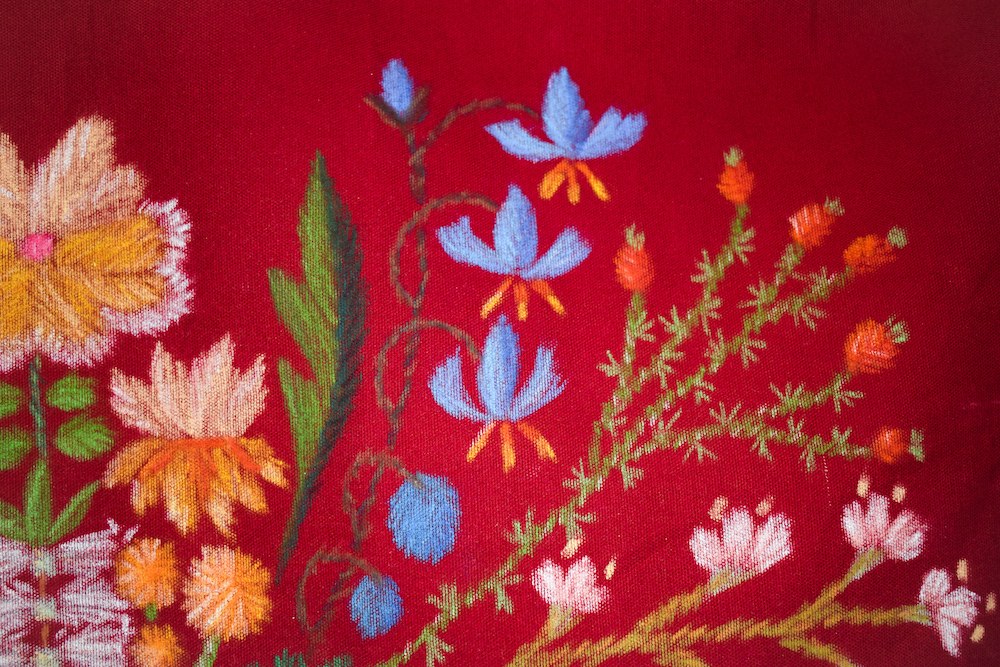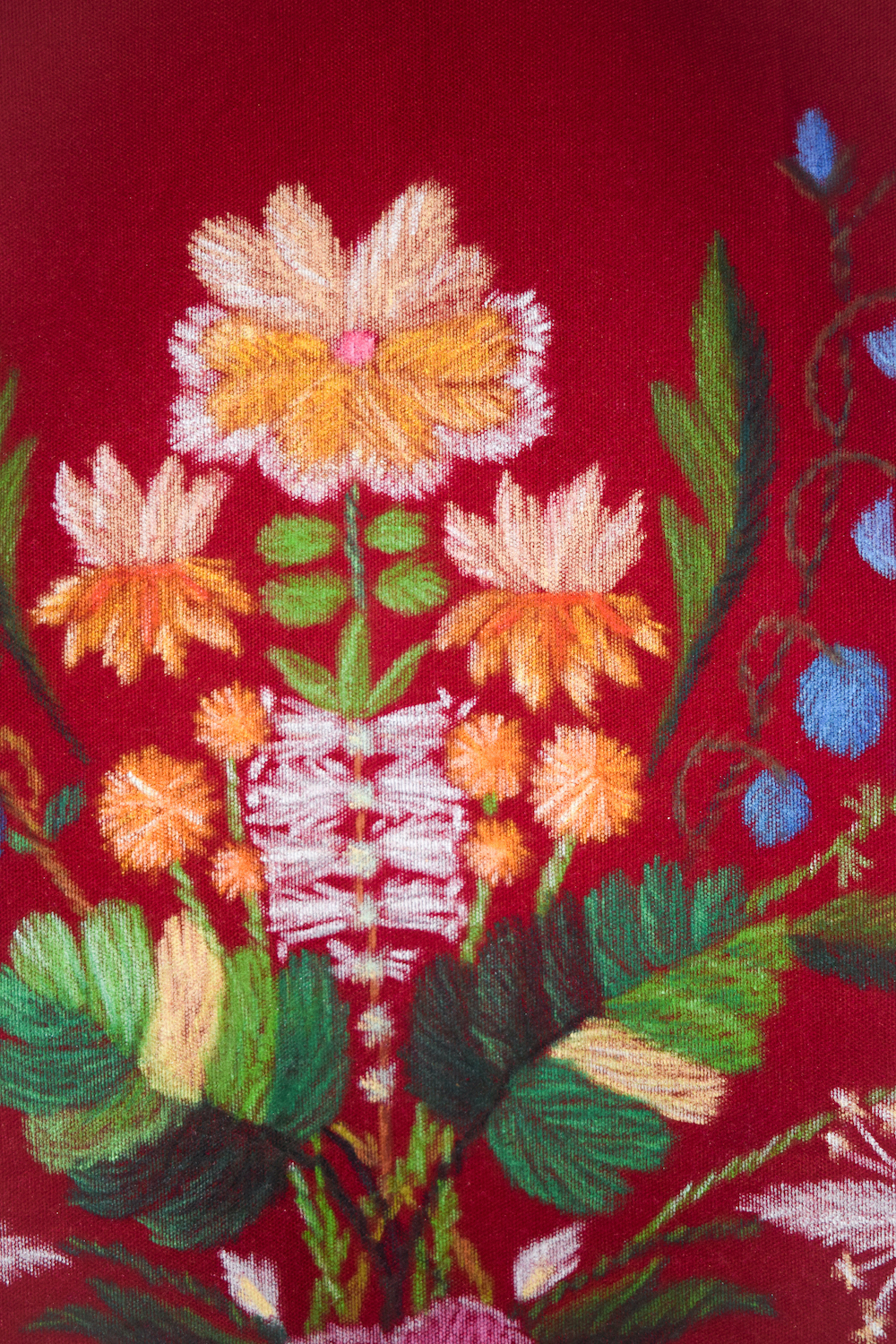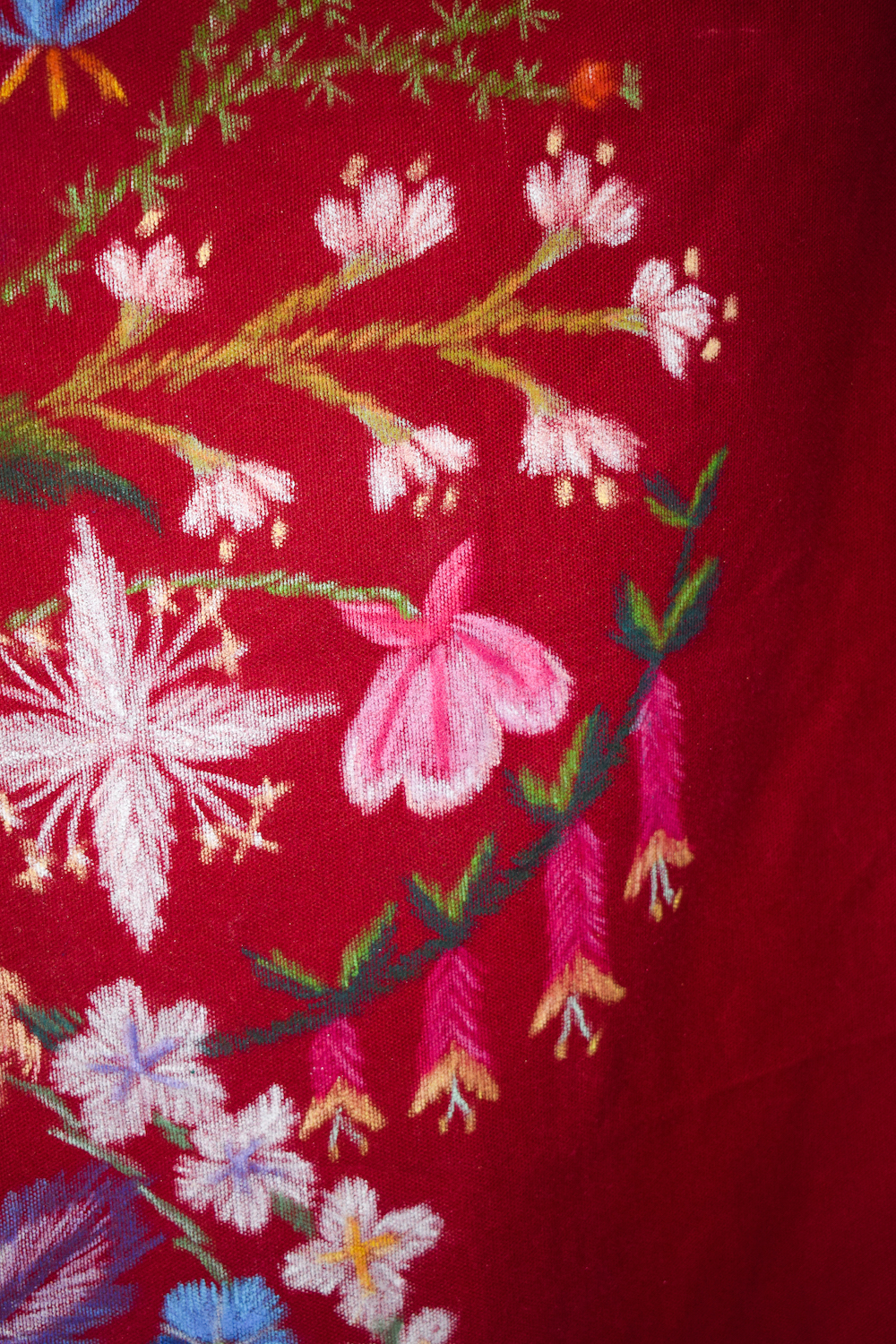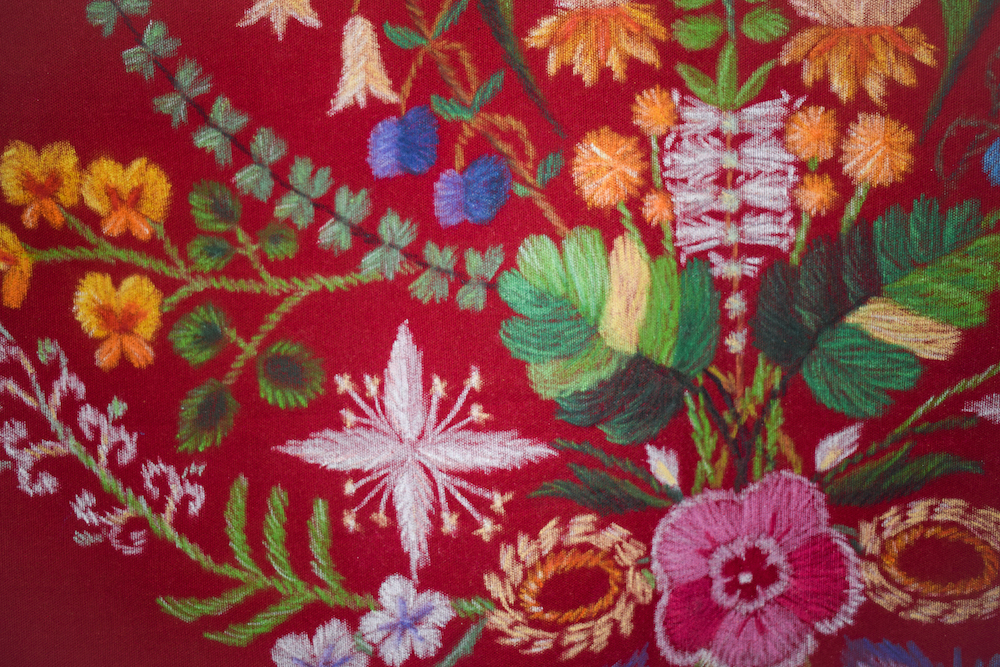Tussie-mussie for Shared Sentiments [2021]
oil pastel on cotton canvas, 110x90cm
‘Tussie-mussie for Shared Sentiments’ pays homage to my mum’s hand-embroidered folk dress and the stylised Lihula lilltikand (floral embroidery) blankets found in West Estonia.
Seeing the work of artisans at the Lihula Lilltikandi Selts inspired me to make a work utilising Australian floral designs and consider how patterns can adapt to new surroundings. The ersatz-embroidery, created in oil pastel - an equally challenging medium, intends to provoke the viewer into examining their own assumptions around the labour and nature of textile work and the way in which terms such as domestic craft, folk art can be often derogatory terms used to downgrade masterful practices into dowdy domestic crafts.
As part of a bigger ongoing project, I want to question what authentic reproduction looks like through diasporic appropriation and how we can adapt and evolve traditional practices into contemporary contexts.

The work draws from the language of flowers (floriography) and the practice of wearing nosegays or tussie-mussies. The word “tussie” is a Middle English word meaning a small bouquet of flowers, and “mussie” referring to the moistened moss that held the stems together to keep them from wilting, they gained popularity during the Victorian era when fascination around all things to do with death, symbolism and the occult hit peak moral fervour. Placed within quaint vases made from silver, porcelain and other materials, they could be pinned to a bodice and were located close to the nose to ward off the stench in the streets and the plague and were composed primarily of scented herbs such as rosemary, lavender, thyme, and rue.
These pungent aromatic herbs were thought to protect the individuals from germs and invisible pathogens, whilst simultaneously communicating a story through their chosen flowers, silently communicating outwardly to others how they feel about themselves or others. Depicting 20 native endemic Australian flowers (and a fern) the work draws inspiration from George Robertson’s 1891 book ‘The Language of Australian Flowers’. Below is a list of the flowers depicted in the tussie-mussie, each a small affirmation and reminder of shared sentiments felt throughout lockdown:
- Forest goodenia, Ivy goodenia, Australian morning primrose (Goodenia hederacea) - I pine for your company
- Tasmanian waratah (Telopea truncata) - remembrance in absence
- Cherry ballart, Cypress cherry, Native cherry (Exocarpos cupressiformis) - celibacy
- Currajong, Tasmanian Hemp-bush (Asterotrichion discolor fka Plagianthus sidoides) - an invitation to dance
- Billy button, Bachelor’s Button (Craspedia globosa potentially Craspedia richea) - forecast of the future
- Guinea flower, Yellow-flowering bush thyme (Hibbertia serpyllifolia) - absence makes the heart grow fonder
- Purple apple-berry (Billardiera longifolia) - I share your sentiments
- Maidenhair spleenwort, Trichomanes-like spleenwort (Asplenium trichomanes) - wait till the clouds roll by
- Blue/Smooth/Spreading flax lily, Blue-berried Flax Lily (Dianella longifolia) - your presence revives me
- Golden Tip, Clover Bush, Yellow Pea, Australian shamrock (Goodia lotifolia) - I droop in your absence
- Guitar plant (Lomatia tinctoria) - my heart vibrates when we meet
- Fagus, deciduous beech, Myrtle beech (Nothofagus cunninghamii) - solitude
- Alpine Podolepis, Mountain Lettuce, Cattleman’s Lettuce, Dandelion (Podolepis robusta fka Podolepis acuminata var. robusta) - permission to call
- Sturt’s Desert Rose (Gossypium sturtianum) - your blush unseen
- Eastern correa, Australian Fuchsia (Correa reflexa var. speciosa) - a peep into futurity
- Hansen’s Nardoo (Marsilea hirsuta potentially Marsilea drummondii) - while there is life there is hope
- Clematis, Supple Jack (Clematis aristata) - pure love
- Pink Eye, Hairy Pink-bells (Tetratheca pilosa) - beauty in danger
- Native Flax, Wild flax (Linum marginale) - your bashfulness conceals your charms
- Salt helotrope, Native Heliotrope (Heliotropium curassavicum) - your smile rekindles love



In investigating these traditions and cultural practices I’ve come to consider a lot around the morality and ethics around aestheticising death (e.g. memento mori) and how artists often participate in the spectacularisation of trauma. How will we look back on these times with the benefit of hindsight and ethically approach a difficult and awful period for many in many differing ways. In creating this work I chose to design a bouquet of flowers to depict a nuanced picture of what lockdown truly meant to Australians across the board. Feelings of isolation, inspiration, desperation, hopelessness, invitations to call, celibacy, absence & hope, these are all shared sentiments we can and should feel when we reflect on what communities have endured and will continue to endure.

